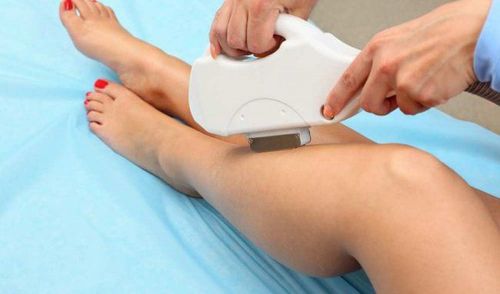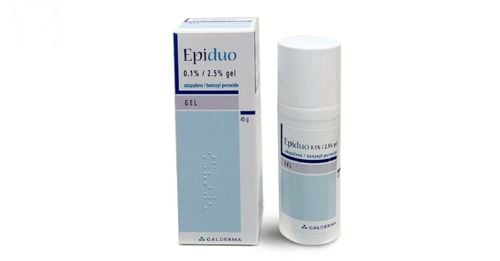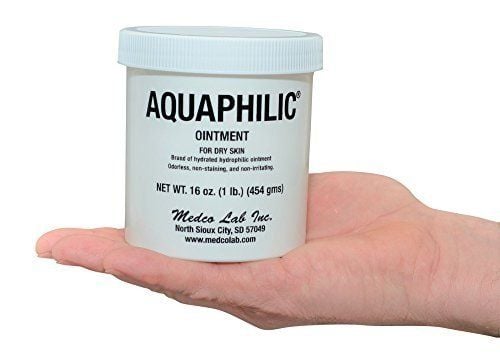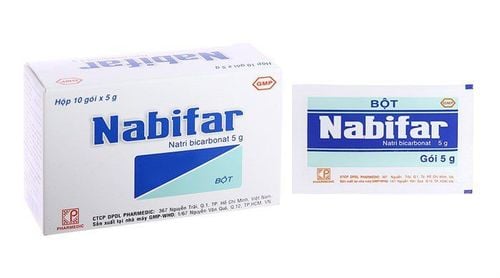This is an automatically translated article.
Folliculitis is a very common skin condition characterized by inflammation of the pores and infection. Signs of pore inflammation begin as mild irritation and red inflammation on the affected skin with a feeling of mild heat, peeling, and pain. Although folliculitis is not contagious from person to person, it can spread to other areas of the body if proper skin care is not taken.1. How to take care of skin with folliculitis at home
1.1 Warm compress
Warm compresses will help soothe swelling, swelling, and pain. You first need to boil a soft cotton towel or face towel to disinfect it by boiling some water and adding salt to it, soaking the cloth in boiling water. Then, take the cloth out, wring it out and gently press it on the inflamed skin.Repeat this at least twice or thrice a day, each time using a new towel or disinfecting a previously used towel.
1.2 Cleanse the skin
The affected area must be cleaned daily with antibacterial soap. Always remember to use warm water and pat the skin dry with a soft towel. Use a clean towel or towel each time and do not share it with anyone. Any cloth that comes into contact with the affected area should be cleaned with warm water and detergent.
Dùng xà phòng diệt khuẩn làm sạch khu vực da viêm nang lông hàng ngày
1.3 Apply soothing gel
There are many household ingredients that can be applied to the affected skin for amazing results. In it, aloe is a miracle plant, the gel from the leaves can help the skin heal faster and also provide a soothing feeling.Clean the affected area with soap and water before applying pure aloe vera gel to the affected area. Aloe vera gel can be used directly without any additives.
Do the same with apple cider vinegar or fresh turmeric, ingredients known worldwide for their antibacterial, anti-inflammatory and antioxidant properties.
1.4 Using essential oils
Tea tree oil, geranium oil, grapefruit seed oil are very effective in treating folliculitis. In it, tea tree oil can be added to your shampoo, lotion or shower gel.Care for folliculitis skin with essential oils by gently rubbing on the damaged skin and leaving it on afterwards. Before use, test on a small area of skin to make sure there are no side effects. Tea tree oil is especially effective for people with recurrent folliculitis.
1.5 Avoid shaving or waxing
Do not shave or wax the skin where the pores are inflamed. This is because this can cause permanent scarring and also cause the skin to bleed and spread infection.Furthermore, skin care with folliculitis will take a long time to heal if there is any rubbing. Even when applying medication, remember to use a cotton swab to keep skin contact to a minimum.
1.6 Protect the affected area
Protection is imperative in folliculitis skin care to ensure there is no increase in severity or extent of damage. If the skin that is inflamed pores comes into contact with clothing, be sure to wear loose-fitting clothes to allow the area to breathe and avoid friction.Besides, after exercising, quickly remove sweaty clothes and take a shower to keep the skin clean of sweat and dry. Avoid using public pools or baths to avoid infecting yourself further. Use natural skin care products and make sure your skin stays clean and dry.
2. Specialized medical treatments for stomatitis
While many cases of folliculitis will clear up within a week or two with good folliculitis self-care, if it is severe or if folliculitis recurs, a person should see a doctor.To diagnose folliculitis, your doctor will need to do a physical exam, mainly looking at skin lesions and taking a medical history. To determine the type of infection, the doctor may swab the skin to obtain a sample of the infectious agent to determine the appropriate course of treatment. In rare cases, a skin biopsy may be required to rule out a more serious underlying medical condition. Then, the treatment will depend on the type of folliculitis you have and how severe it is. Some common treatments are as follows:
Antibiotic creams, gels or lotions Antifungal creams or lotions Corticosteroids, topical or oral, to reduce inflammation and itching Minor surgical procedures to drain pus from boils Hair removal with laser

Tẩy lông bằng laser là 1 phương pháp điều trị viêm nang lông
3. Ways to prevent pore inflammation
While treatment is important, prevention can literally stop the problem at its root. The following simple actions help prevent the risk of pore inflammation and recurrence:Shower regularly, especially after exercise Do not use public hot tubs Avoid sharing Towels and towels Do not scratch or injure the pimples as it can easily spread to the surrounding healthy skin. Wear loose, breathable clothing. Keep your environment cool and dry. Avoid applying greasy products. and oils on skin and hair Limit antibiotic and steroid use unless absolutely necessary Take care to strengthen your immune system, maintain a healthy diet, and take a daily probiotic supplement. Hair loss is a common skin condition that can be caused by an infection. Signs of pore inflammation are easily recognized as red, pink or white pus-filled bumps, intense itching. If the skin with folliculitis is not properly cared for, it can cause permanent skin damage. In contrast, folliculitis can completely be treated effectively with home care as well as medical intervention if it is severe.
Regularly visit the website of Vinmec International General Hospital for more information on the care and treatment of common skin problems of each age group.
Please dial HOTLINE for more information or register for an appointment HERE. Download MyVinmec app to make appointments faster and to manage your bookings easily.













